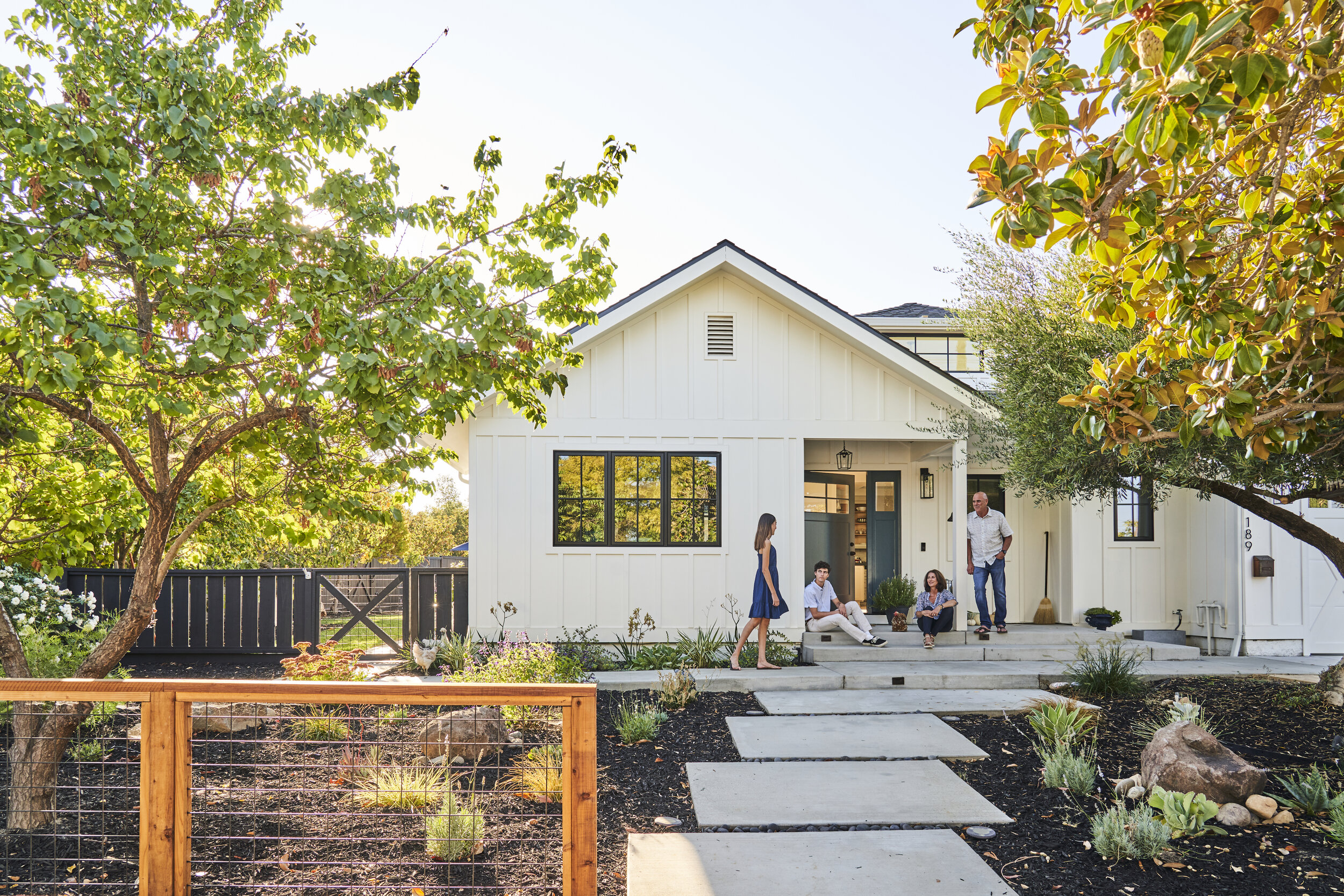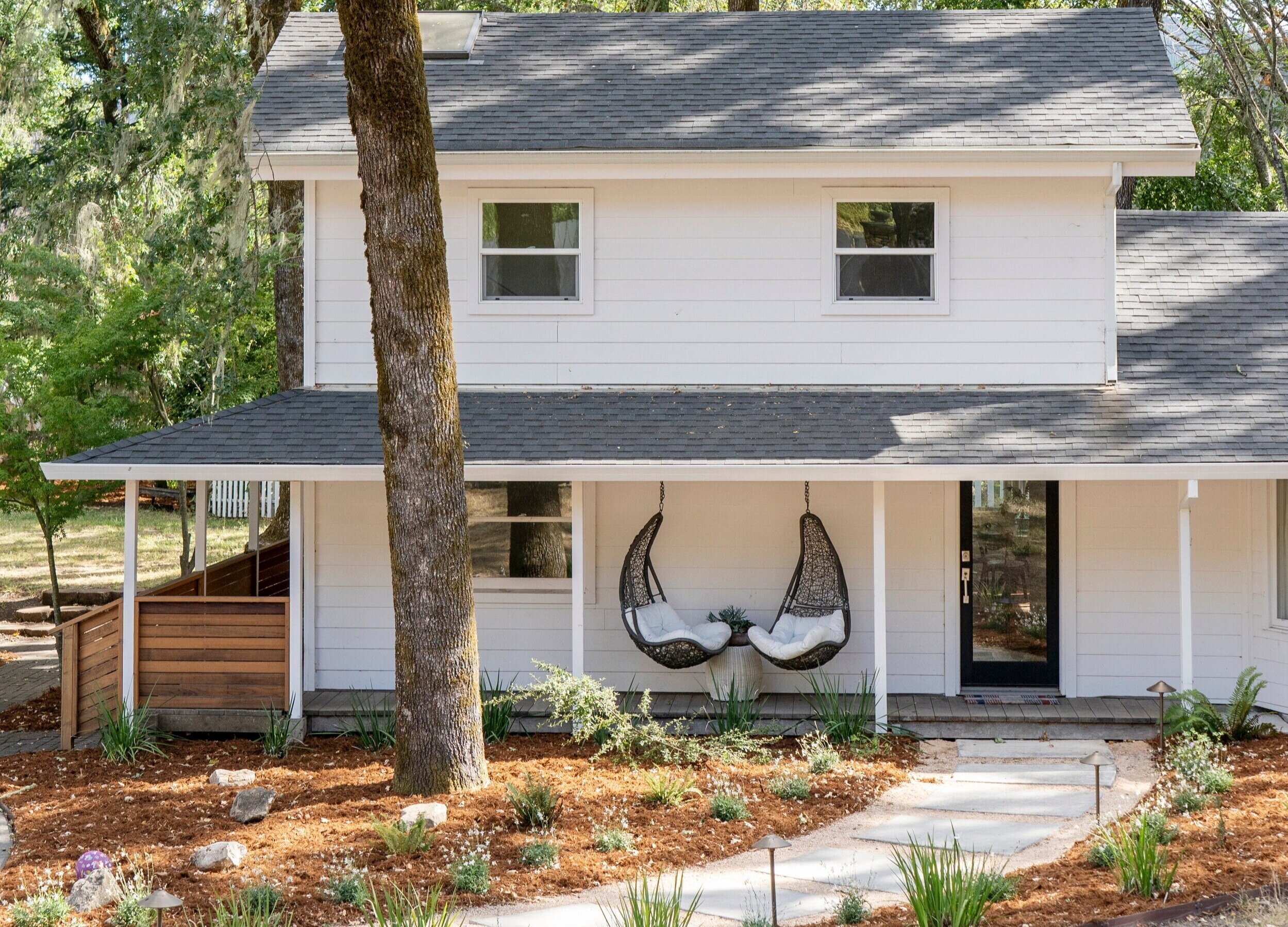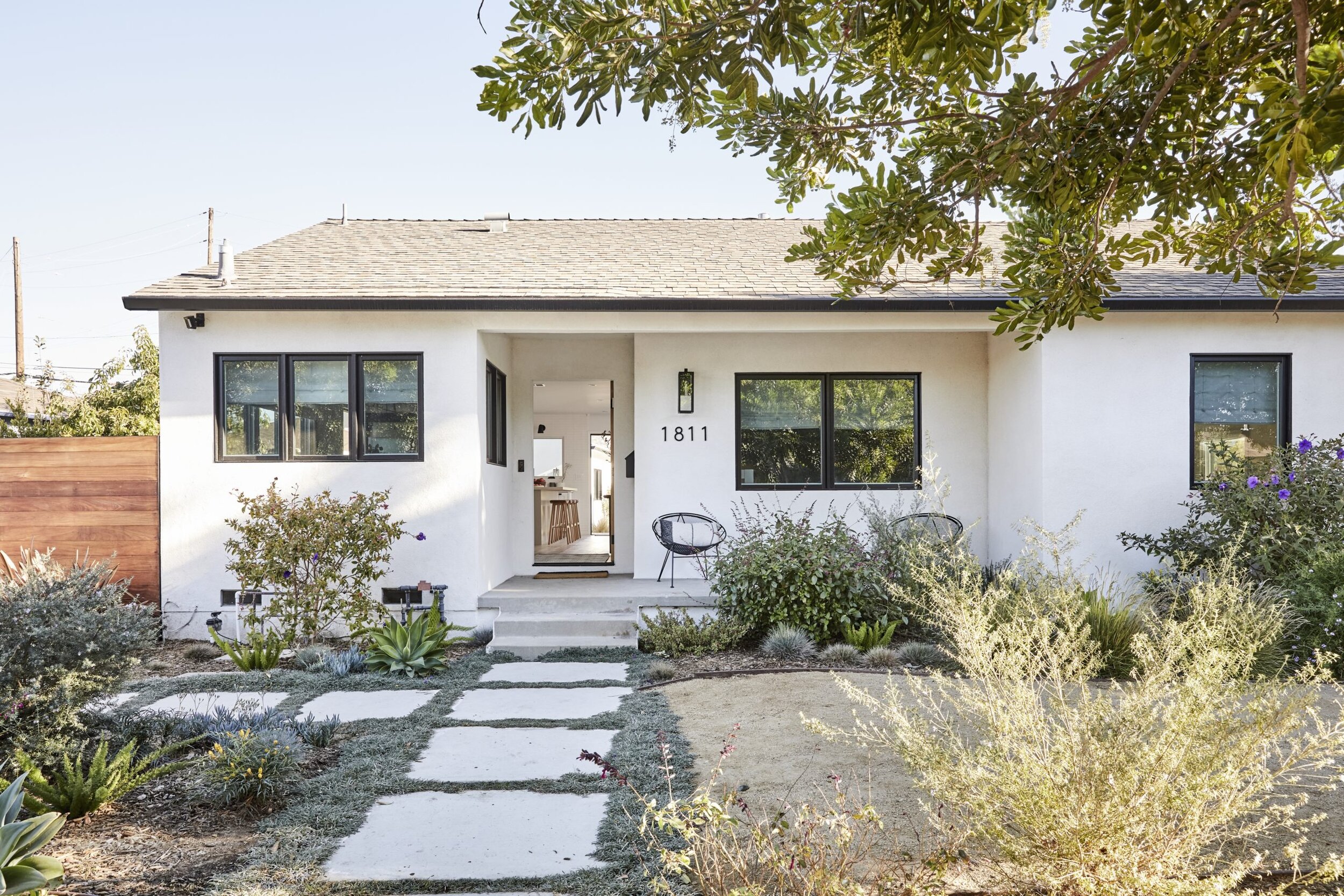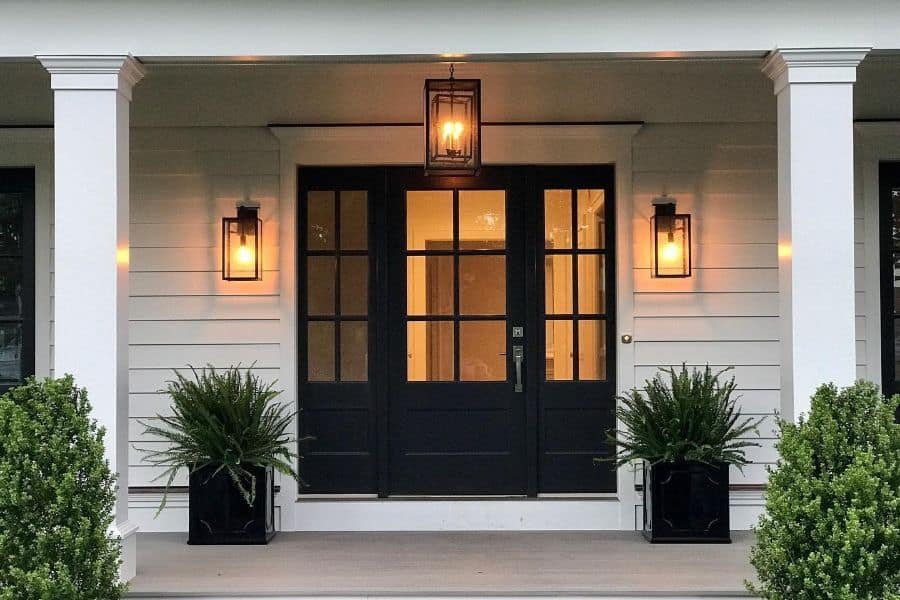The contractors in the Yardzen Pro Network are top-rated professionals - we partner only with the best, most responsive, and diligent contractors for our clients' projects. This week, we chatted with our friends at Cutters Landscaping in Austin, Texas so you could get a glimpse at the type of Yardzen Pros that bring Yardzen designs to life.
Tell me more about the founders of Cutters, how many people are on the crew, and what your philosophy is, how you started, what your backgrounds are?
This endeavor started out as a two-man crew. Charlie and Zach played baseball together at Texas A&M, and after graduating, Charlie went on to work for a large landscaping construction company, while Zach became a financial advisor for a top-tier investment firm. They both had a shared vision of becoming entrepreneurs and were able to combine Charlie’s extensive knowledge of landscaping practices with Zach’s business management portfolio to create what is now Cutters Landscaping— a 30-man crew with an additional 3 designers in the heart of Austin, Texas.
A personal note from Charlie and Zach:
Some might say going into business with friends is a risky decision. For us, the decision was quite simple. Our trust in one another and our mutual respect for our different roles and contributions are what keep our business thriving from project to project. Our philosophy has always been to truly enjoy doing what we do, and we’re proud to say we have a lot of fun taking care of our clients’ landscaping needs with the help of the amazing team we’ve built here at Cutters!
What makes Cutters different from other landscape contractors?
What sets Cutters Landscaping apart from other landscape companies is our communication with our clients and our speed of process. We are extremely responsive and we try our very best to provide our prospective clients with an estimate the same day we visit their property, which is pretty rare in this industry. We have heard in the past that landscapers will come out to the project site and then take weeks to provide an estimate, which is why we have a streamlined process to eliminate that type of negative client experience altogether. Our clients are the reason we’re here and we keep an “available anytime” attitude to ensure they get answers sooner rather than later when it comes to their project.
In addition, we have a relatively large number of crew members. In design builds, most companies keep around 10 crew members, and we tripled that. Our crew is highly experienced and can do anything from laying grass to building a home from scratch, and having such a large and skilled crew enables us to complete more projects in a shorter period of time. Our goal isn’t to stay on your property for months at a time. We like to get in and get out in a matter of weeks so our clients can start enjoying their new space as soon as possible!
What’s the most requested feature lately?
Lueder pavers and black star gravel have been requested a ton lately. Lueder pavers are stones that weigh close to 200 pounds a piece, and we use anywhere from 10 to 75 total on most of our projects (we are currently putting out over 100 per week due to the high demand!). These are great for walkways and new patios and have grown increasingly popular in the Austin area, as they are a wonderful alternative to concrete. Concrete typically comes with a set of rules and an approval process concerning impervious cover, so these pavers are a great option for people who want that solid concrete look without the hassle. Black star gravel has many different names (basalt rock for instance), but is essentially a grayish-black rock that pairs beautifully with the pavers to give the space a modern and defined look. Throw in some trendy steel planter beds and you’ve got the cherry on top!
Austin has a good year-round outdoor season, do you have an especially busy month or season?
Austin is a beautiful city and what really draws people here are the seemingly unlimited opportunities for outdoor adventure and fun. We have a couple months of scorching heat every summer, and a couple months of frigid temperatures every winter, but our business is nonstop due to the fact that for most of the year, the sun is shining and the temperature is perfect. Homeowners are typically hesitant to install plants and sod during colder months, so planting may slow in the winter, but hardscaping stays on our schedule year-round. Our biggest influx of clients comes right around the time winter ends and spring begins. Clients around this time are eager to bring their yards back to life after the colder months, and to get them looking bright and welcoming for the spring and summer. While we certainly love the extra business around this time, we find that our installation can get pushed out by 3-4 months as we try to keep up with the influx. With that being said, we pride ourselves on our consistency throughout the year, and we are thankful for our large crew for making our builds as time-efficient as possible.
What’s the average cost of a project in the Austin area?
The average cost of a project in Austin, Texas is around $35k. While we’ve also completed projects with a $10k budget, and some with a $100k+ budget, it has never been about the size of the project for us. We truly enjoy meeting homeowners out on their site and seeing them get absolutely thrilled about the design of their project— however big or small. Working with them to bring that design to life is what gets us out of bed every morning. To us, nothing is more fulfilling than watching their reactions when the project is complete, and hearing about all the great times they’re going to share with family and friends in their new yard. We can't put a price tag on that, which is why we are open to ALL projects year-round!
For folks who are looking for a low-cost renovation, what’s the most cost-effective change they can make for the biggest impact?
We get this question a lot and we love it! We understand that not everyone out there has $35k to spend on their yard, but making a few subtle changes to the space can definitely spruce it up and make it a more pleasant area to hang out in with friends and family. A good place to start is by adding a few planter beds, then some rocks, mulch, and plants. Putting in a bed with mulch has the ability to really bring out everything else around it, and the additions can give the yard some extra aesthetic appeal. If you want to take this one step further, adding in a few lueder pavers as a walkway can really modernize the space. These are all great options for those looking to add some flavor to their yard without breaking the bank, and you can have all of it done for around $5k.
What is a new trend you've seen that you think is going to take off soon?
A new trend we’ve seen take off here in the Austin area is stock tanks. These fully-functioning “mini-pools” are an amazing alternative to in-ground swimming pools and hot tubs. In places like Austin where summer temperatures can climb into the 100s, having your own swimming pool is ideal. These are a perfect option for those who want to get some sun and have a beer with friends in the comfort of their own backyard, and their low cost and maintenance make them all the more appealing. We expect these to really take off with the millennial generation, as they add a laid-back vibe to yards that may not be big enough for a full-sized pool. Cutters can add a stock tank to your yard for around $2,500!
What is something you think landscape design clients should know before starting their build?
Before starting their build, it’s important for clients to understand that landscaping is essentially construction work. When considering this, it’s necessary for clients to understand that there are pipes and wires underground that aren’t always easily discovered, and certain things may come up once our team gets onto the project site and starts working. For example, we had an experience recently where a pool company had installed pipes three inches below the ground, so the first time we dug in, we ended up hitting a pipe. Clients tend to panic when this type of issue comes up, but reputable companies like ours have built great relationships with plumbing and irrigation workers over our years of experience, and we will always take the necessary measures to mitigate issues that arise when we’re on site. There is a certain amount of trust that our clients need to have in us as a company, and we do a fantastic job of ensuring that their home and property are in the best hands. At the end of the day, this is what we do, and we are abundantly prepared to serve our clients in the best situations, and also in the situations where issues unexpectedly arise along the way. It’s part of the job!
What is your favorite part about working with Yardzen clients?
We absolutely love working with Yardzen clients because they always seem to know exactly what they want— and it shows in their beautiful designs. They understand what it’s going to take to bring their design to life, and they seem more keenly aware of the cost of the project they want to take on. Our Yardzen clients trust the process, and they trust us. This makes it so much easier to do our job, and nothing makes us happier than bringing their design to fruition. Yardzen has taken a new and unique “tech approach” to landscaping that is certainly going to change the industry in a positive way for years to come, and we are very proud to work with them!






































































